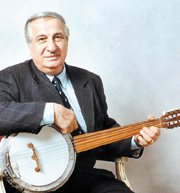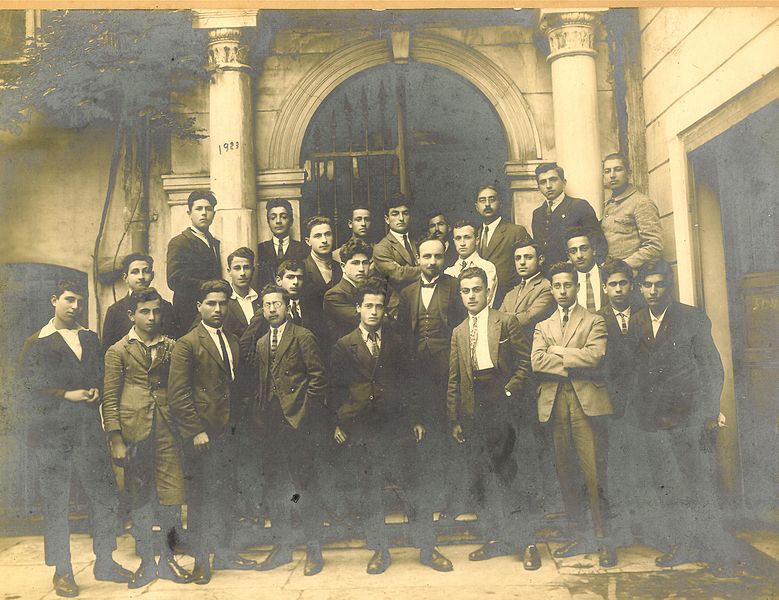Armenian and Kurdish Musician Aram Tigran Dies
 Armenian singer Aram Tigran, who was considered one of the best contemporary Kurdish singers and musicians died today in Athens, Greece in Evangelismos General Hospital. The 75-year-old celebrated singer’s two children traveled from Belgium to be with him and his wife, according to ANF News Agency. Tigran had lost consciousness two days before his death and doctors did not seem hopeful.
Armenian singer Aram Tigran, who was considered one of the best contemporary Kurdish singers and musicians died today in Athens, Greece in Evangelismos General Hospital. The 75-year-old celebrated singer’s two children traveled from Belgium to be with him and his wife, according to ANF News Agency. Tigran had lost consciousness two days before his death and doctors did not seem hopeful.
Tigran wanted to be buried in Diyarbakir, the largest city in southeastern Turkey. The son of an Armenian Genocide survivor, Tigran was born in 1934 in Qamishlu, a Kurdish city in Syria and had been involved in music from an early age. By the time he was 20, Tigran was singing in Kurdish, Arabic and Armenian.
Kurdish President Remzi Kartal released a message of condolence for Tigran and his family, stating “Great poet and friend of the Kurdish people Aram Tigran has died. Our pain is too big…his place cannot be filled in any way.” (rough translation)
In addition to ANF reporting that fans have flocked to the Greek hospital to pay their condolences, many have expressed their sadness and regret through social networking sites Facebook and Twitter.
“The Kurds and Armenians should arrange something in memory of Aram Tigran, so that they can complete his mission,” wrote freedom4kurds , who poignantly added “All Aram Tigran wanted was peace. Peace between people and the people’s freedom” and “Aram Tigran LOVED his people, he belonged to the proud Armenian and the proud Kurdish people, even if he was not Kurdish. RIP.”
Others who might not have been too familiar with Tigran and his music, also chimed in.
“Aram Tigran is the symbol of love, peace and reconciliation between the Kurdish and the Armenian people,” wrote FreeCyprus, who added “The Kurds and Armenians are my brothers, love each other.”
Strangely, Armenpedia, “The Armenian Encyclopedia” does not have an entry on Aram Tigran.
Listen to two of Aram Tigran’s songs below, “Hey Le Le Waye” and “Sev Cu”
The relationship between Armenians and Kurds spans more than a 100 years, with certain hostile events occurring between the two groups, including the Hammidan Massacres and the Armenian Genocide. Kurdish culture received support during Soviet Armenia, with a Kurdish radio broadcast from Yerevan and Riya Teze, the Kurdish newspaper published in Yerevan. In the late 60s and 70s, The Armenian Academy of Sciences founded a Kurdish Studies Department.
According to the 2004 U.S Department of State human rights report, the Yazidi Kurds,the largest ethnic and religious minority in the country were subjected to harassment in Armenia, including the hazing of Yazidi army conscripts and poor police responses to crimes committed against the Yazidis. The Union of Armenian Aryans, an ultra-nationalist group, has called for the cleansing of Yazidis from Armenia. A high percentage of Yezidi children do not attend school, both due to poverty and a lack of teachers who speak their native language.
The situation improved however, and the 2007 U.S Department of State Human Rights Report noted that “As in previous years, Yezidi leaders did not complain that police and local authorities subjected their community to discrimination.” The 2008 report noted that attendance rates among children in the Yezidi ethnic minority continued to be lower than average, partially due to economic reasons, a lack of Yezidi teachers and textbooks, and the early removal of teenage girls from schools for marriage.





